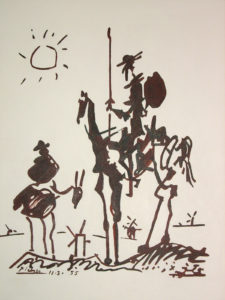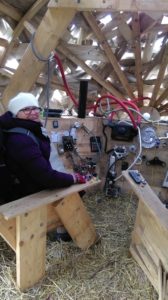Well, today is August 2nd, and the glorious 1st of August has been survived yet again. No missing eyes, fingers or pockets. No one has been reported as dying from boredom during last night’s presidential speech. And although no birds have been seen flying in the garden yet today, I’m sure they’re just having an “off” day and will all be flitting about normally tomorrow.
Swiss National Day is defined by an evening communal meal, a children’s lantern parade, a firework display, and, finally, an enormous bonfire. Considering the hot, dry summer conditions this is a tricky business. Volunteer firemen stand importantly about. However, firework size and quality is the yardstick for measuring the amount of Swissness a community holds.
True fact: 3,000 tons of explosive material and 1,700 tons of fireworks are used in Switzerland every year.
 The first of August morning always starts with a few isolated bangs. These are either children or fathers who have no willpower to wait for the darkness and just test-try one or two big crackers to make sure they will be fine for later. For the past month, all shops have been filled with August 1st paraphernalia—Swiss and cantonal flags; paper lanterns; bangers and packages of fireworks; glasses, plates, napkins, balloons and hard-boiled eggs with Swiss crosses on them.
The first of August morning always starts with a few isolated bangs. These are either children or fathers who have no willpower to wait for the darkness and just test-try one or two big crackers to make sure they will be fine for later. For the past month, all shops have been filled with August 1st paraphernalia—Swiss and cantonal flags; paper lanterns; bangers and packages of fireworks; glasses, plates, napkins, balloons and hard-boiled eggs with Swiss crosses on them.
Later in the day, it is like an eclipse of the sun, as the world goes quiet. All families lie down for a jolly good afternoon nap to make sure that eyes are bright and reflexes sharp for the upcoming pyro-show.
Towards the evening the smell of roasting wieners and cervelas fills the air, along with conversation and laughter. Little bangers go off. As the beer and wine flow, there is animation in the air.
At dusk distorted music floats over from the football field behind the town hall where the bonfire is stacked 3-metres high into the sky. Loud hailers shout unintelligible words.
Cars begin flocking in from over the border looking for non-existent parking places (they are at the other end of the village in a stubble field). Someone stops to pee on your hedge as he thinks no one is looking. The excitement builds.
Surrounding, higher, villages begin early, and from the upstairs window you see the two separate and glorious pyrotechnic displays. Then suddenly overhead there are the three sonic booms, and way high over the roof giant multi-coloured showers rain down. There is a pause between the “phoof” of the missile, and the explosion of fire in the sky. Sparks sprinkle down, but dissolve before they catch your hair alight.
You watch until your neck hurts and with a louder than loud bang it is all over for another year.
This morning there was just the wisps of smoke from a huge heap of grey ashes and three lone cars left in the stubble field.
All is well in Switzerland.








